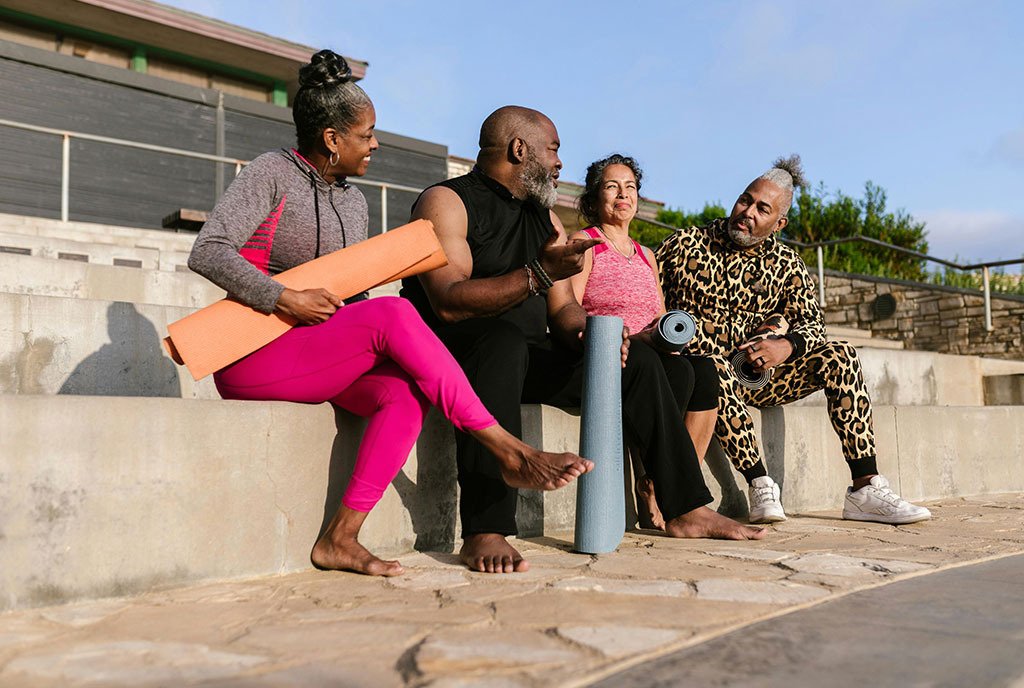
For Black Americans, health statistics are staggering, with dire implications. In the United States, Black newborn babies die at three times the rate of White newborns. Black women are three-to-four times more likely than White women to die from pregnancy-related complications, regardless of their education or financial status. A study in New York City revealed that college-educated Black women with financial stability were more likely to experience severe maternal morbidity than both impoverished White women and White women without a high school diploma.
Effective health education isn’t just about providing information; it’s about empowering individuals and communities to advocate for their health and make informed decisions.
According to a Harvard University social scientist, 200 Black people die every day who would not have died if their health experiences matched those of White Americans. A study published in the Journal of Health Care for the Poor and Underserved found that medical professionals, as a group, exhibited an implicit preference for White Americans over Black Americans. As this research makes abundantly clear, the connection between structural racism and poor health outcomes is undeniable.
While health education cannot solve all the complex and multifaceted issues behind health inequities rooted in structural racism, it is one of many important levers practitioners can use to shift the healthcare landscape and promote health and wellbeing among minoritized communities. Research has demonstrated that educational attainment, as well as education attained outside of formal schooling, is associated with people living longer, healthier lives.
Health education should speak to the heart and mind alike.
Effective health education isn’t just about providing information; it’s about empowering individuals and communities to advocate for their health and make informed decisions. When done effectively, health education empowers people to understand their rights, navigate the healthcare system, and adopt healthier lifestyles, thereby contributing to improved health outcomes.
Why Health Education Matters
Health education transcends mere dissemination of knowledge; it sparks a passion for wellbeing. By crafting engaging and accessible programs tailored to diverse audiences, health educators can create transformative experiences that inspire positive change. Take, for example, my nonprofit organization, A Healthier Happier Me (AHHM), which works to empower young people in marginalized communities through interactive education programs and community outreach initiatives.
Health education should speak to the heart and mind alike. Culturally responsive programs respect and incorporate the diverse backgrounds of participants, enhancing the relevance and impact of the learning experience. Strength-based approaches in health education focus on identifying and nurturing inherent abilities, recognizing that every community possesses unique strengths waiting to be discovered and harnessed. This approach not only builds confidence but also fosters a profound sense of ownership and empowerment.
In the face of daunting healthcare disparities, organizations like AHHM stand as beacons of hope and change. By empowering youth and young adults in marginalized communities through tailored health education programs, organizations focused on health education transcend knowledge impartation—they foster resilience, ignite aspirations, and build bridges to brighter futures.
Through interactive workshops, community outreach, and a steadfast commitment to cultural responsiveness, AHHM ensures that each participant not only gains health knowledge but also discovers their own strength and potential. By celebrating the unique strengths of every community and promoting ownership over one’s health, AHHM inspires a new generation of advocates and leaders.
However, unfortunately, due to the design of programs and the nature of the content provided within them, not all health education initiatives succeed. Additionally, it can be even more difficult to reach medically underserved and socio-politically underrecognized populations because of their communities’ specific challenges.
How Health Education Campaigns Can Fail Marginalized Communities
Despite good intentions, health education campaigns don’t always work. They may fail to reach marginalized communities effectively because of:
- Cultural (In)Competence
Programs that do not consider the cultural values, beliefs, and practices of their intended audience are less likely to be effective. For example, during the COVID-19 pandemic, some vaccine campaigns that did not address specific concerns and mistrust within Black and Indigenous communities faced significant resistance. This, in addition to misinformation and disinformation campaigns specifically targeting these communities (an issue that preceded the COVID-19 pandemic but was accelerated by it), resulted in lower rates of vaccination among Black and Latinx communities. However, programs with more culturally tailored approaches to the same communities yielded better results.
- Medical Mistrust
Historical injustices and ongoing discrimination contribute to a deep-seated mistrust in the healthcare system among marginalized groups. This should not be viewed as a lack of education or awareness on the part of medically underserved communities. Instead, this mistrust is earned, and the issues that created the mistrust—including the coercive, exploitive, and harmful practices behind medical innovation—need to be meaningfully addressed before the communities involved will fully engage with healthcare systems and practitioners. Health education campaigns need to build trust and demonstrate cultural sensitivity to overcome these barriers.
Sign up for our free newsletters
Subscribe to NPQ's newsletters to have our top stories delivered directly to your inbox.
By signing up, you agree to our privacy policy and terms of use, and to receive messages from NPQ and our partners.
- Inaccessible and Unaffordable Healthcare
By equipping them with knowledge and skills, health education affords us the opportunity to empower youth to drive meaningful change and break intergenerational cycles of poor health.
Due to physician shortages, medical deserts, and/or a lack of health insurance, many Americans cannot access healthcare. Even among those who have health insurance, due to high-deductible health plans and high premiums, they often can’t afford to use it. Accordingly, many Americans have limited or no access to healthcare. The same socioeconomic factors that make healthcare inaccessible stymie people’s ability to access health services and hinder their participation in health education programs. Addressing these barriers through free or low-cost programs, transportation, and childcare can improve engagement. Marginalized communities often have limited access to healthcare resources, including education. Effective campaigns need to ensure that information is accessible in terms of location, language, and format.
When these obstacles are overcome, health education programs can help minoritized communities improve their outlook on health and wellbeing.
Looking ahead, the impact of health education programs extends far beyond individual lives—it transforms communities. It sparks crucial conversations, drives systemic change, and lays the foundation for healthier, happier futures for all.
Effective Health Education for Marginalized Communities
Health education empowers young people in marginalized communities to advocate for equitable healthcare practices and policies. By equipping them with knowledge and skills, health education affords us the opportunity to empower youth to drive meaningful change and break intergenerational cycles of poor health.
When health education campaigns are successful, it is because initiatives partner with trusted community leaders and deliver messages about health and wellness in culturally relevant ways that are more likely to be accepted by marginalized communities.
For instance, culturally tailored diabetes interventions for Hispanic populations have shown success in improving health outcomes by addressing specific dietary habits, cultural practices, and language preferences. There are several factors, discussed below, that increase programs’ success and impact:
- Culturally Responsive Education
Culture plays a significant role in the effectiveness of health education programs. Programs that tailor their messaging and methods of persuasion to the cultural contexts of different communities are more likely to resonate and positively impact marginalized communities. People behind health education programs should understand the cultural milieu, preferences, and sensitivities of these groups. But culturally oriented programs can still fail underserved communities if poorly designed and implemented. For tailored interventions to be successful for minoritized communities, health education efforts must have clear and easily comprehensible guidelines, and they have to grasp and retain people’s attention.
- Strength-Based Approaches
Focusing on the inherent strengths and abilities of individuals and communities can foster a sense of empowerment and ownership. One of the strengths-based approaches that researchers, healthcare providers, health service providers, and other public health practitioners can utilize is asset mapping. According to an article in the Journal of Biomedical Analytics, asset mapping—or understanding where a community’s strengths lie—shifts the perspective of health professionals from focusing on the perceived deficiencies of a community to understanding the resources communities can build upon. Community assets can include (but are not limited to) the people themselves (their relationships, skills, and expertise), local associations, neighborhood institutions, and physical assets like parks and community centers.
- Interactive and Engaging Programs
Engaging, interactive education methods, such as workshops, games, and storytelling, can make health education more relatable and memorable. These methods inspire and educate participants effectively. Additionally, programs can move beyond individualistic frameworks to engage whole family units that hold “innate potential for health promotion and disease prevention.” More dynamic approaches have also been proven to demonstrate positive results. In fact, in the previously mentioned study on tailored interventions for patients with diabetes within the Latinx community, researchers found that interactive elements were among the most effective approaches. These elements include frequent, intermittent education, bi-directional messaging, tailored feedback, multimodal communication schemas, and human-computer interaction.
- Measuring Impact
Evidence-based approaches in health education allow us to measure outcomes, refine strategies, and demonstrate effectiveness. This data-driven approach ensures efforts are impactful and sustainable, paving the way for lasting change. It’s also imperative that the research process is centered around community perspectives and that the voices of the people who will potentially benefit from a program, tool, product, or service. To this aim, community-based participatory research (CBPR), which was used in developing Urban HEART (Health Equity Assessment Response Tool) in Detroit, MI, serves as a useful process for developing solutions that work. This framework can also create opportunities for shared benchmarking and co-learning throughout the research, development, and deployment of health education initiatives that can be used to assess impact. In addition, processes like People Assessing Their Health (PATH) and Community Health Impact Assessment (CHIA) can also be used to understand and, consequently, improve the impact of health education tools from the community perspective.
By focusing on youth empowerment, health education not only improves individual health outcomes but also transforms entire communities. It fosters resilience, builds bridges across divides, and creates pathways to brighter futures for all. Through interactive and culturally responsive programs, organizations like AHHM inspire aspirations among youth and young adults. By nurturing their potential and celebrating their strengths, we cultivate a generation of leaders committed to health equity, ensuring that health and happiness become attainable for everyone, regardless of their background.









